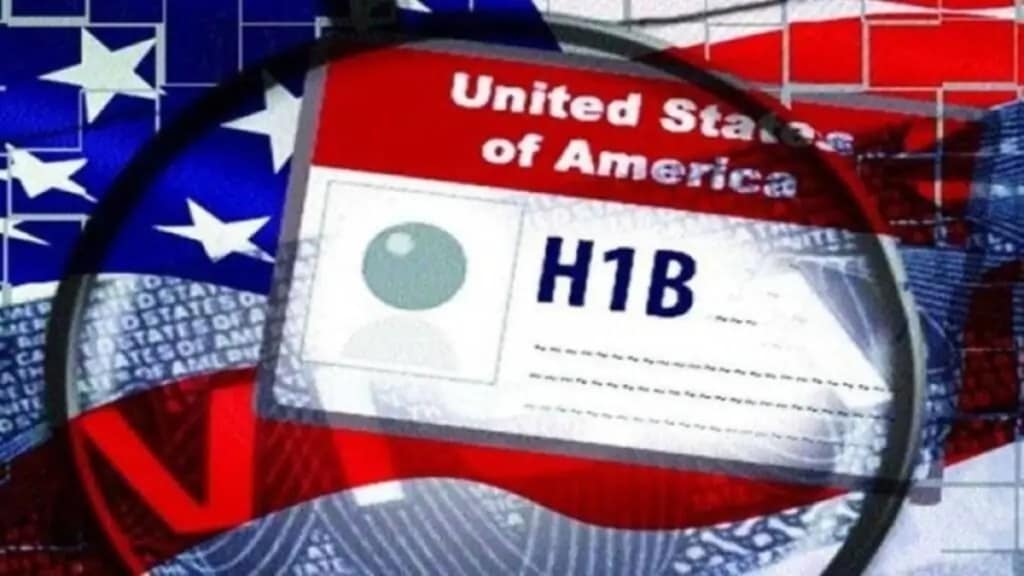H-1B visas are crucial for high-skilled foreign nationals, including international students, to work in the US and become employment-based immigrants and U.S. citizens.
However, only 20% of new H-1B applications result in approved workers, making the H-1B visa the most restrictive category in the U.S. immigration system, reports the National Foundation for American Policy (NFAP).
The finding contradicts assertions that the H-1B category is an easy source of labor. Even though some government officials and lawmakers favor new restrictions, the category is already highly restricted due to the numerical limit, says the report.
It carries with it significant fees, wage requirements, and other employer obligations. The 85,000 annual limit, which employers have exhausted yearly for decades, prevents most applications for new high-skilled foreign nationals from being approved.
While only 20% of new H-1B registrations gain approval, 72% of tourist visas and over 90% of most other work visas are approved, according to the report authors.
A foreign couple wanting to attend Mardi Gras is three times more likely to get a visa to the United States than an electrical engineer with a master’s degree can obtain H-1B status. A European teenager is four times more likely to get a visa to work at a summer amusement park than a graduate student is to receive H-1B status to work for a U.S. company on artificial intelligence.
The low annual limit on new H-1B petitions makes the category the most restrictive visa in the U.S. immigration system, says NFAP in the report.
In FY 2025, employers filed at least 423,028 eligible H-1B registrations, but U.S. Citizenship and Immigration Services could only allow 85,000 new foreign nationals to obtain H-1B status under the annual limit, an approval rate of only 20%.
Over 300,000 eligible high-skilled individuals did not gain H-1B status to work in the United States in FY 2025 because of the yearly limit passed by Congress. Because of the low annual ceiling and high demand, USCIS uses a random selection process that begins with registration in March to choose eligible H-1B professionals to start employment in the upcoming fiscal year.
The Immigration Act of 1990 established a 65,000 annual limit on new H-1B petitions. In 2004, Congress raised the H-1B annual limit to 85,000 by exempting 20,000 individuals a year who earned a master’s degree or higher from a U.S. university. Despite that increase, the supply of new H-1B visas for companies has been exhausted for more than two decades.
The 85,000 annual limit on new H-1B petitions for high-skilled foreign nationals is low, equaling 0.05% of the U.S. labor force, and remains the leading immigration problem for most technology companies.
The annual limit significantly impedes hiring foreign-born scientists and engineers, which many critics ignore when calling for more restrictions on the H-1B category.
The restrictions sometimes advocated include requiring vastly higher salaries for H-1B professionals than comparable U.S. professionals. Without H-1B visas, relatively few high-skilled foreign nationals, including international students, could work in the United States, the study finds.
However, in a study conducted by Ogletree Deakins, the numbers for the fiscal year 2026 H-1B cap reveal a selection rate of approximately 35 percent compared to 29 percent in FY 2025.
The number of eligible H-1B registrations decreased by 26.9 percent from 470,342 in FY 2025 to 343,981 in FY 2026. Also, the number of unique beneficiaries significantly decreased from 423,038 in FY 2025 to 336,153 in FY 2026. The average registration per beneficiary slightly decreased from 1.06 in FY 2025 to 1.01, indicating an average of one submitted registration per beneficiary. This shows that there has been an increase in the selection rate from approximately 29 percent in FY 2025 to approximately 35 percent.

